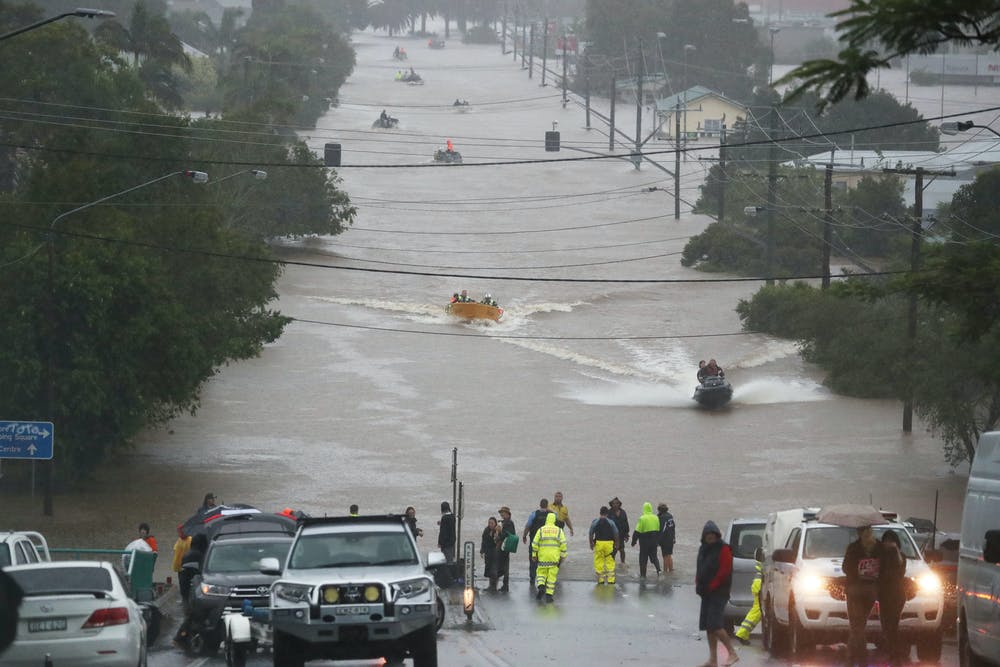What’s at stake? “A liveable and sustainable future for all”
The threats posed by climate change are growing more rapidly than expected. In some cases the impacts are now irreversible. But most dire is that they’re happening too fast for communities to adapt.
“Today’s IPCC report is an atlas of human suffering and a damning indictment of failed climate leadership,” said UN Secretary-General Antonio Guterres. “With fact upon fact, this report reveals how people and the planet are getting clobbered by climate change.”
The Intergovernmental Panel on Climate Change (IPCC) has released the second report as part of the 6th Assessment Report. The first section was released in August last year, commonly known as the code-red report, as it contained such striking warnings.
This second report goes further, focussing on impacts, adaptation and vulnerability. It concludes that nations aren’t doing nearly enough to turn the situation around.
“The cumulative scientific evidence is unequivocal: Climate change is a threat to human well-being and planetary health,” says the report, it warns nations, “will miss a brief and rapidly closing window of opportunity to secure a liveable and sustainable future for all.”
Over 40% of the world’s population are “highly vulnerable” to climate, the grim research shows.
It involved some 270 authors and more than 34,000 pieces of scientific research. The authors of the IPCC are all experts brought together by the United Nations.
Australia Already Feeling the Effects
The devastation is already here. Flood waters reaching 15m have inundated Southern QLD and Northern NSW this week. It’s been described as a once in 1000 year event, doing away with the old metric of the once-in-100-year storm.
The sad reality is that these measures will soon become redundant as devastating storms and drought become the norm.
“No more talking rubbish. No more spin. Our political leaders must now make a genuine commitment to emissions reduction at emergency speed. Anything less is failing all Australians and betraying our neighbours in the Pacific.” Says David Ritter, Head CEO fo Greenpeace Australia Pacific.
“Australia has a chance to lead the world, to take care of all our citizens and to be a great friend to our neighbours in the Pacific – but all this is being squandered.”
The report’s focus on Australia suggests coastal areas, where the bulk of the population lives, will see homes, infrastructure and ecosystems lost as sea-levels rise.
The agricultural sector will face a worsening of already dire conditions. Extreme weather will make planning harder than ever, with storms and drought destroying crops and disrupting supply chains.
For the Great Barrier Reef, the prognosis is ugly. It’s already at very high risk of crossing a critical threshold for survival. Between 2016 and 2020, it was hit with three marine heatwaves causing major coral bleaching and death. Once the coral is gone, many of the fish and invertebrates do not survive.
Children born today, who may still be alive in the year 2100, are going to experience four times more climate extremes than they do now; and that’s if temperatures only rise by a few more tenths of a degree over today’s levels.
If temperatures push above the pivotal 2 degree threshold, they would feel five times the floods, storms, drought and heat waves, according to the report’s scientists.
With the current rate of warming already pusing to 1.1°C, it’s critical that action is taken now to contain increases to below the 1.5°C threshold as targeted by the Paris Agreement. This is one of the factors emphasised in the report, that is a major departure from previous reports.
In no uncertain terms, it spells out the danger of assuming we can overshoot the 1.5°C level, and then reduce emissions at a later date.
The data and modeling show that mitigation and adaptation is already being overwhelmed, and that steps above 1.5°C have the potential to get out of control.
The Impact of Investors
We need systemic change to the way our economy functions, and fast.
The good news is that the planning has all been done. There are plans, and scenarios already written up by economists and scientists. The technology is poised and ready. Now, we just need the will to move as one society, as one self-motivated species, that’s part of a greater ecosystem.
We need centralised rules to put caps on carbon emissions. This will incentivise development of substitutes and hasten the transition from fossil fuels to renewables.
The subsequent blooming of innovation will allow Australian’s investors and industrialists to export solutions to the rest of the world, where policy changes may not be as readily adopted. But by offering alternative technologies, at a lower price than traditional, polluting options, the choice will be an economic one, not a political one.
The pages of OnImpact are full of such progress; of the startups bringing innovation to market, and the investors supporting them.
“Governments must strengthen 2030 emissions targets to align with the objectives of the Paris Agreement and build on their policies supporting adaptation investment which can protect communities, the economy and investment returns.” says Rebecca Mikula-Wright, CEO of the Investor Group on Climate Change..
“Institutional investors also have systemic exposure to climate change risks. Unless emissions are reduced, extreme weather will have worsening impacts on property, infrastructure, agricultural production and other climate dependent industries. Climate change will also have indirect impacts on sovereign credit risks, supply chains, the property market, insurance pricing or wider economic conditions.”

